ROYAL MELBOURNE ZOOLOGICAL GARDENS
ELLIOTT AVENUE PARKVILLE, MELBOURNE CITY
-
Add to tour
You must log in to do that.
-
Share
-
Shortlist place
You must log in to do that.
- Download report
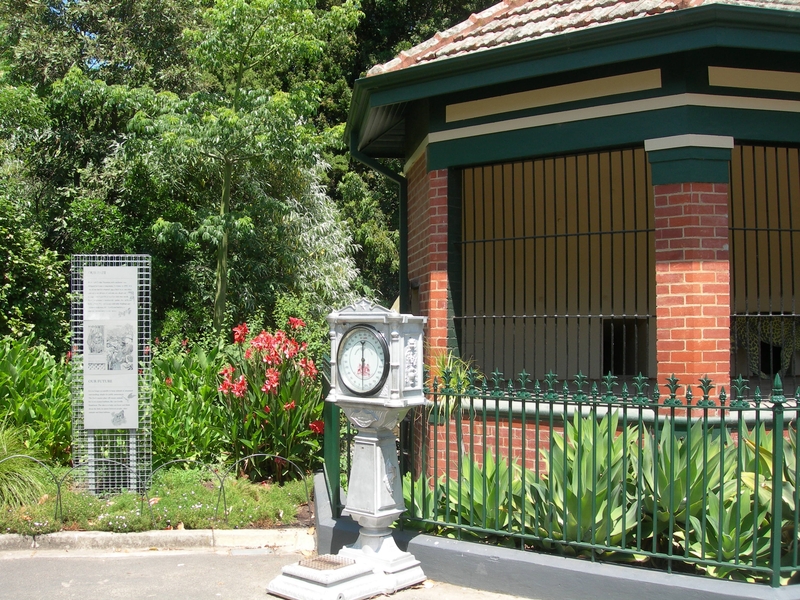

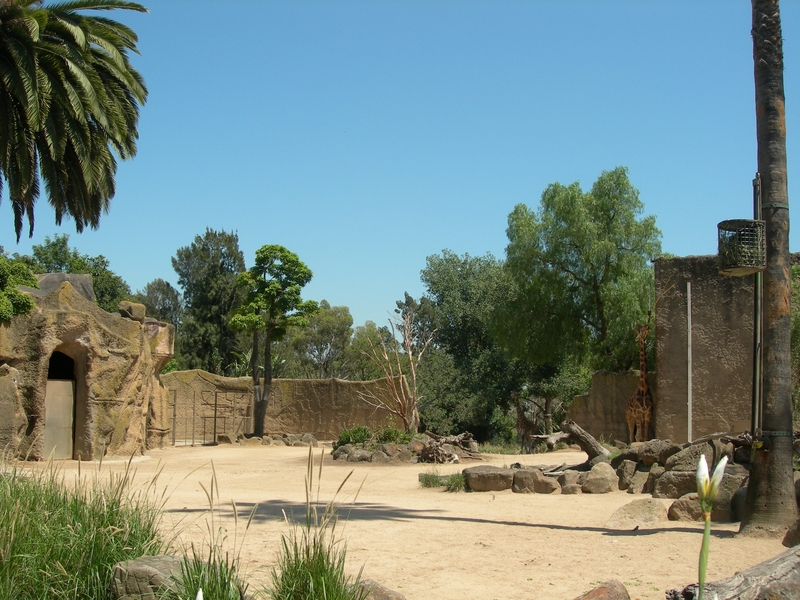



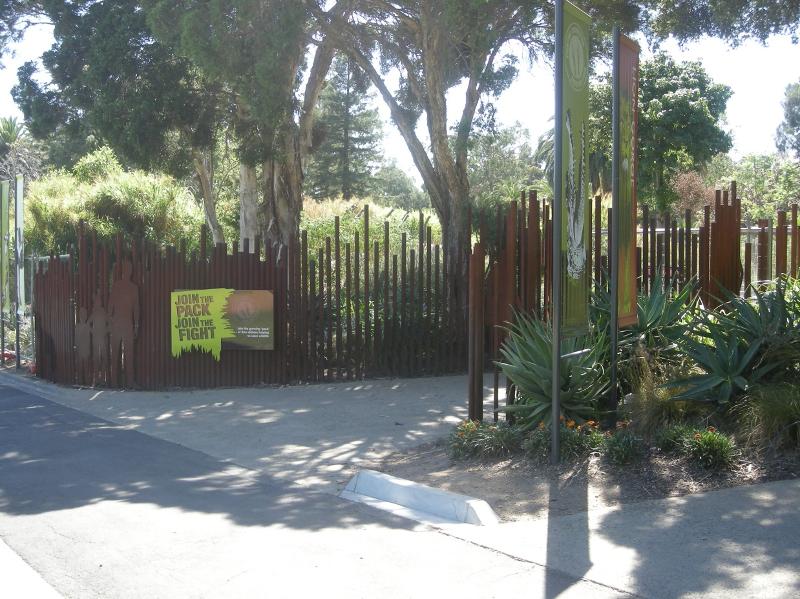
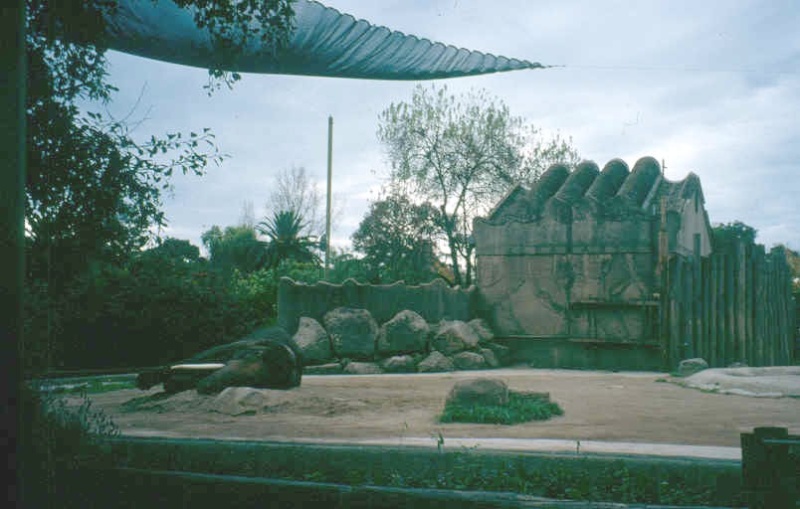


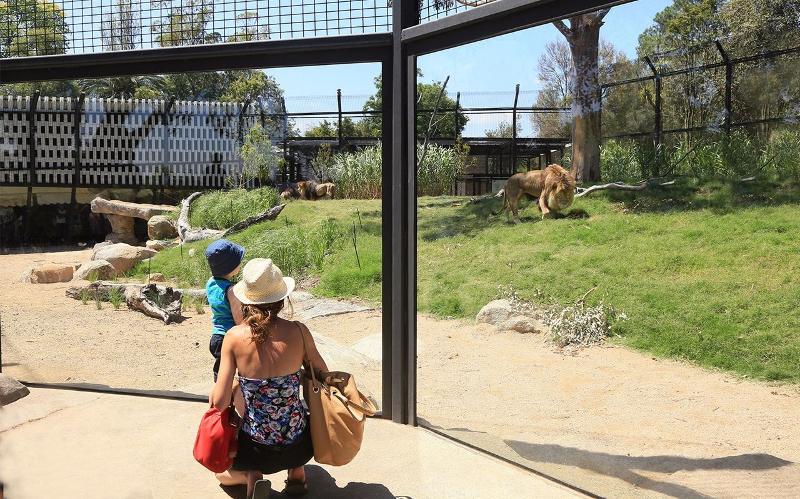







Statement of Significance
-
-
ROYAL MELBOURNE ZOOLOGICAL GARDENS - History
Historical overview
The Royal Melbourne Zoological Gardens (now known as the Melbourne Zoo) is the oldest zoo in Victoria and Australia and opened in 1862. Prior to this, animals procured by the Zoological Society of Victoria were kept in rudimentary enclosures at Richmond Paddock opposite the Botanic Gardens. These animals were brought to Victoria to enrich the purses and sensibilities of its colonists - birds that would sing sweetly or consume fruit-eating insects, fish for the rivers, and game and grazing animals for bush and paddocks. The importation of animals from other countries was known as 'acclimatisation' and influenced the Royal Melbourne Zoological Garden's early development. The popularity of the Zoological Gardens at Regent's Park in London (1826) also lent weight to its establishment, as did a drive to demonstrate civic development during the Victoria's growth after the gold rushes. In the first three decades following the 1870 appointment of director Albert Le Souef, exotic animals were procured for public display, entertainment became a central function and the Zoo and its attractive gardens were established as a major recreational and cultural feature in Melbourne. In the 1960s discussions around the world regarding the value and role of zoos led to a change in perspective within the international zoo community and Melbourne Zoo began to transform its presentation and treatment of animals. The present-day Melbourne Zoo continues to remodel and redevelop its facilities to better address its objectives of conservation, research and education.
Chronological history
(from National Trust of Australia (Victoria) website)
1857: Meeting held 6 October 1857 in St Patrick's Hall, Melbourne toforman ornithological society. Meeting proposes formation of azoologicalsociety 'both for the purpose of science and for that ofaffording thepublic the advantage of studying the habits of animalcreatures in aproperly arranged Zoological Gardens'.
1858: Zoological Society reconstituted as a committee appointed bytheChief Secretary to administer the Zoological Gardens, then locatedinRichmond opposite the Botanic Gardens; Ferdinand MuellerappointedDirector in August 1858.
1861: Committee disbands in favour of the newly formedAcclimatisationSociety of Victoria; Zoological Gardens moves to presentsite in RoyalPark. The 700 acre (approximately 280 ha) site of RoyalPark had beenreserved by Charles La Trobe in May 1859 (on the eve of hisdeparturefrom Victoria) following efforts since 1844 by the MelbourneCouncil tohave the area set aside. An experimental farm on 142 acres hadbeen setaside in 1858 at the north-west corner of the site.
1861-62: The whole park area of about 223 hectares at Royal Parkmadeover to the Acclimatisation Society of Victoria to accommodate itsherdof alpaca llamas as well as some camels and antelopes whichthegovernment had placed in its charge. The successful attempt by EGFitzgibbon, the Town Clerk of Melbourne, to resist thepermanentreservation of this land, was only the first of a series ofbattles toprevent the whittling away of the parkland.
1861: Trustees appointed by the government enclosed an area of alittleover 20 hectares near the centre as a zoological gardens.AlbertPurchas, committee member of the Acclimatisation Society ofVictoria,requested 'to peg out and properly define the ground to befenced in'.Purchas gave his services gratuitously and in 1889 wasofficiallyappointed architect for the zoo buildings. His contribution tothecommittee lasted until his death in 1909. Competition for a designofthe zoological gardens held in May 1861 attracts 7 entrants.Competitionwon by Alfred Lynch. Central path and water feature innorth-eastportion of site probably part of his plan. (p.81) The Lynchdesignpossibly the basis of the 1875 published plan but de C has noevidence.(p.81). Paths laid down by A.A. LeSoeuf and Wilkie Brothersappointedgardeners. Camel sheds (formerly in the vicinity of the Burkeand Willstree) transferred to the new enclosure, but alpacas and goatsgrazedoutside in Royal Park during the day.
1870: Albert Alexander Cochrane LeSouef appointed Director, June1870,and occupies position until his death in 1902.
1872 Influence of Le Soeuf felt in the renaming of theAcclimatisationSociety as the Zoological and Acclimatisation Society ofVictoria.
1875: Guide to the Zoological Gardens (with plan) published.Waterfeature shown in the north-east portion of site, probably theworkdescribed in 1863.
1875: Bear pit established at Melbourne Zoo, part of the 'modernzoo'tradition derived from Regents Park , but out of date by 1876(accordingto Le Soeuf). Containment was formed by a pit (rather thanbars) andthere was an element of entertainment (pole up which bearclimbed). Thepit was unsightly and unhealthy and was infilled in 1913.
1876: Reservation of Royal Park with the exclusion of thezoologicalgardens, the site of the later powder magazine and theproposedshowgrounds site; in 1883 and 1884 these latter two were addedto RoyalPark.
1880: A. Le Souef travels overseas. Admission first charged at the zooon14 January 1880 with more widespread implementation of admissionchargesin 1881.
1881: Zoological and Acclimatisation Society Incorporation Act, No.794,1881.
1884: Railway line through Royal Park opened for traffic. In 1875 aplanhad been prepared for a line of railway to enter the park atFlemingtonRoad, opposite Dryburgh Street, pass around the east side ofthe Zoo,and enter Brunswick Street at the same point as the presentline. TheRailway Construction Act of 1880, which authorised the line,permitted adeviation of half a mile, but construction began in 1883 onthe surveyedroute: then plans were changed and a cutting formed fromFlemington Roadtowards the Zoo was filled while construction of thepresent morewesterly route began, involving the removal of the powdermagazine butnot the two associated cottages, which were subsequentlyoccupied byemployees at the Zoo. The railway was opened for traffic in1884, when anew Railway Construction Act authorised the line whichbranches off tothe north-east of Ievers Street, as a part of the OuterCircle route(opened in 1889).
1888: Dudley LeSouef travels overseas and marries. On his returnhisfather (Director, A.A. Le Souef) requests £500 for a newresidence(possibly the one now occupied by FOTZ) - this residence wascertainlyerected by 1896 when it was shown on the MMBW plan.
1889: Horse drawn tram route constructed by the Melbourne Tramway&Omnibus Company Limited along the road to the Zoo from theintersectionof Sydney Road and Gatehouse Street; these trams ceased in1923. Thetramway was also apparently constructed in 1889 along itspresent routefrom Abbotsford Street, North Melbourne, across the park tothe west ofthe Zoo, and on through West Brunswick to Bell Street, WestCoburg.
1896 MMBW plan of the Zoo published and this shows considerable detailoflayout.
1902: William Henry Dudley LeSouef succeeds his father as Directorandserves until his death in 1923. Visit to Hagenbeck Zoo, Hamburg,byDudley LeSouef.
1904: Annual Report includes 'Plan of the Gardens of the Zoological&Acclimatisation Society of Victoria, Royal Park, Melbourne'. 'Thecouncilendeavours, as far as able, to make the flower beds adistinctivefeature, as they add so much to the attractiveness of theZoologicalGarden. A long avenue of Pepper Trees has been planted ...intended tosupplement a row of Sugar Gums, which are infested with woodborer'.
1907-08 Dudley LeSouef visits Hamburg Zoo
1913: First giraffes arrive at zoo, giraffe house erected. Giraffehouseillustrated in Annual Report, c.1924-25. Building altered severaltimesand for a time used for a small circus run by the Freeman family.
c.1916-17 Elephant yard established, probably on the same site asthelater Elephant House.
1923: Death of W.H.D. LeSouef.
1924: Andrew Wilkie takes over as director, after having started atthezoo as a young gardener from the botanic gardens in the 1860s at age14.
1926: Annual report: 'during the year the Council instituted inquiriesinEngland, America and Germany with the object of ascertaining whetherwecan not, in time to come, make the Gardens more attractive tochildren byproviding playgrounds on Continental principles. The matterwill beconsidered during the coming year.'
1927: New parrot pavilion in course of erection mentioned inAnnualReport; landscape gardener added to staff.
1927-28: Orangutan house erected. The adjacent andarchitecturallysimilar Monkey house was shown on the c.1931 plan butprobably erectedat a similar period to Orangutan house.
1928 Octagonal house erected, initially occupied by monkeys insteadofits planned use as an aviary.
1934: Australian section established by David Fleay and others.
1930s Food Preparation Room and veterinary complex erected (judgingfromarchitectural style).
1936 New Zoological Gardens Act proclaimed, Zoological Board ofVictoriaestablished as a statutory authority. Public Works Departmentnowresponsible for building program at the zoo.
1938-39 Perimeter fence, front and rear entrance buildings,children'splayground, monkey island (now the seal enclosure) and theveterinarycomplex erected. Percy Everett, Chief Architect for PublicWorksDepartment, responsible for the design of many works. Flightaviary(after 1980 known as Great Flight Aviary) opened on its presentsite.
1940s Miniature 'Spirit of Progress' train 'one of the mostpopularamusements for children'.
1944 Elephant House erected, elephants located for a time in theGiraffeenclosure.
1952 Carousel installed at the zoo.
1963 Masterplan prepared by Garnet Alsop and Partners.
1967 New Zoological Gardens Act proclaimed.
1980: Great flight aviary re-opened with new rainforest, wetlandandscrubland environments.
1984-85 Butterfly house and Bear enclosure developed.
1988-89: Masterplan prepared by internationally renowned zooplannerDavid Hancocks.
Key references150 Years Melbourne Zoo, 2012, Bounce Books: Thornbury, Victoria.
Acclimatiser, 'Caught & Coloured: Zoological Illustrations from Colonial Victoria' website,
viewed 22nd February 2017, https://museumvictoria.com.au/caughtandcoloured/Acclimatiser.aspx
Alfred Dunbavin Butcher, Australian Society for Fish Biology website, viewed 30th January 2017,
http://www.asfb.org.au/about/current-executive-council/show/1159
Cats, dogs and crocs. Oh My!, Zoos Victoria website: News 18 December 2014 page, viewed 18th January 2017, http://www.zoo.org.au/news/moving-day-for-lions
Lions' big move marks end of an era at Melbourne Zoo, Through Golden Eyes website: 28 February 2014 page, viewed 18th January 2017,
http://throughgoldeneyes.blogspot.com.au/2014/02/lions-big-move-marks-end-of-era-at.html
Lions moving to Melbourne, Zoos Victoria website: News 16 February 2017 page, viewed 19th February 2017, http://www.zoo.org.au/news/lions-moving-to-melbourne
Melbourne Zoo - 150 years in Royal Park, Culture Victoria website: 'Land & Ecology' theme,
viewed 30th January 2017, http://www.cv.vic.gov.au/stories/land-and-ecology/melbourne-zoo-and-you-150-years/melbourne-zoo-150-years-in-royal-park/
Moving Day for Lions, Zoos Victoria website: News 27 February 2014 page, viewed 18th January 2017, http://www.zoo.org.au/news/moving-day-for-lions
Up Close & Personal: Melbourne Zoo Parkville, Vic: Viridian Glass website, viewed 30th January 2017,
http://www.viridianglass.com/inspiration/case-studies/20_upclosepersonal_melbournezoo
The Victorian Acclimatisation Society, Museums Victoria website: 'Land & Ecology' theme,
viewed 22nd February 2017, https://museumvictoria.com.au/
ROYAL MELBOURNE ZOOLOGICAL GARDENS - Assessment Against Criteria
A, E, F, G, H
ROYAL MELBOURNE ZOOLOGICAL GARDENS - Permit Exemptions
General Exemptions:General exemptions apply to all places and objects included in the Victorian Heritage Register (VHR). General exemptions have been designed to allow everyday activities, maintenance and changes to your property, which don’t harm its cultural heritage significance, to proceed without the need to obtain approvals under the Heritage Act 2017.Places of worship: In some circumstances, you can alter a place of worship to accommodate religious practices without a permit, but you must notify the Executive Director of Heritage Victoria before you start the works or activities at least 20 business days before the works or activities are to commence.Subdivision/consolidation: Permit exemptions exist for some subdivisions and consolidations. If the subdivision or consolidation is in accordance with a planning permit granted under Part 4 of the Planning and Environment Act 1987 and the application for the planning permit was referred to the Executive Director of Heritage Victoria as a determining referral authority, a permit is not required.Specific exemptions may also apply to your registered place or object. If applicable, these are listed below. Specific exemptions are tailored to the conservation and management needs of an individual registered place or object and set out works and activities that are exempt from the requirements of a permit. Specific exemptions prevail if they conflict with general exemptions. Find out more about heritage permit exemptions here.Specific Exemptions:It should be noted that Permit Exemptions can be granted at the time of registration (under s.42(4) of the Heritage Act). Permit Exemptions can also be applied for and granted after registration (under s.66 of the Heritage Act)
General Condition 1
All exempted alterations are to be planned and carried out in a manner which prevents damage to the fabric of the registered place or object.
General Condition 2
Should it become apparent during further inspection or the carrying out of works that original or previously hidden or inaccessible details of the place or object are revealed which relate to the significance of the place or object, then the exemption covering such works shall cease and Heritage Victoria shall be notified as soon as possible.
General Condition 3
All works should ideally be informed by Conservation Management Plans prepared for the place. The Executive Director is not bound by any Conservation Management Plan, and permits still must be obtained for works suggested in any Conservation Management Plan.
General Condition 4
Nothing in this determination prevents the Heritage Council from amending or rescinding all or any of the permit exemptions.
General Condition 5
Nothing in this determination exempts owners or their agents from the responsibility to seek relevant planning or building permits from the relevant responsible authority, where applicable.
Specific Permit Exemptions
Minor Works:
Any Minor Works that in the opinion of the Executive Director will not adversely affect the heritage significance of the place may be exempt from the permit requirements of the Heritage Act. A person proposing to undertake minor works must submit a proposal to the Executive Director. If the Executive Director is satisfied that the proposed works will not adversely affect the heritage values of the site, the applicant may be exempted from the requirement to obtain a heritage permit. If an applicant is uncertain whether a heritage permit is required, it is recommended that the permits co-ordinator be contacted.
Registered buildings and structures
Exteriors
. Repainting all previously painted surfaces in the same colour scheme and paint type.
. Repair and servicing of existing equipment and services including wiring, plumbing and fire services; equipment and components with moveable parts requiring lubrication including machinery, engines, water reticulation systems.
. Removal of extraneous items such as air conditioners, ducting, wiring, antennae, aerials, etc, and making good.
. Installation or repair of damp-proof courses by either injection method or grouted pocket method.
. Maintenance of power or pipelines or other public services where this involves no alteration to the fabric of the place.
Interiors
. Installation, removal or replacement of electrical wiring, provided that all new wiring is fully concealed.
. Installation, removal or replacement of smoke detectors.
Landscape
. The process of gardening, including mowing, hedge clipping, annual bedding displays, removal of dead and diseased plants (excluding trees), disease and weed control, mulching and maintenance to care for existing plants and lawns.
. Removal of dead or dangerous trees and emergency tree works to maintain public safety and to protect significant buildings, structures and landscape, and the replanting the same species in the same location provided a tree removal report is submitted to the Executive Director within 21 days of the removal.
. Repairs and maintenance to hard landscape elements, roads and paths, edging, gutters, steps, drainage and irrigation systems, fences and gates.
. Management of trees in accordance with Australian Standard; Pruning of Amenity Trees AS 4373 - 1996.
. Management of trees in accordance with Australian Standard; Protection of Trees on Development Sites AS 4970 - 2009.
. Subsurface works involving the installation, removal or replacement of watering and drainage systems or services.
. Vegetation protection and management of possums and vermin.
ROYAL MELBOURNE ZOOLOGICAL GARDENS - Permit Exemption Policy
Preamble
The purpose of the Permit Policy is to assist when considering or making decisions regarding works to a registered place. It is recommended that any proposed works be discussed with an officer of Heritage Victoria prior to making a permit application. Discussing proposed works will assist in answering questions the owner may have and aid any decisions regarding works to the place.
The extent of registration of the Royal Melbourne Zoological Gardens in the Victorian Heritage Register affects the whole place shown on Diagram 1074 including all buildings (exteriors and interiors). Under the Heritage Act 1995 a person must not remove or demolish, damage or despoil, develop or alter or excavate, relocate or disturb the position of any part of a registered place or object without approval. It is acknowledged, however, that alterations and other works may be required to keep places and objects in good repair and adapt them for use into the future.
If a person wishes to undertake works or activities in relation to a registered place or registered object, they must apply to the Executive Director, Heritage Victoria for a permit. The purpose of a permit is to enable appropriate change to a place and to effectively manage adverse impacts on the cultural heritage significance of a place as a consequence of change. If an owner is uncertain whether a heritage permit is required, it is recommended that Heritage Victoria be contacted.
Permits are required for anything which alters the place or object, unless a permit exemption is granted. Permit exemptions usually cover routine maintenance and upkeep issues faced by owners as well as minor works or works to the elements of the place or object that are not significant. They may include appropriate works that are specified in a conservation management plan. Permit exemptions can be granted at the time of registration (under s.42 of the Heritage Act) or after registration (under s.66 of the Heritage Act).
It should be noted that the addition of new buildings to the registered place, as well as alterations to the interior and exterior of existing buildings requires a permit, unless a specific permit exemption is granted.
Cultural heritage management plans
It is recommended that a Conservation Management Plan is developed to manage the place in a manner which respects its cultural heritage significance.
Aboriginal cultural heritage
If any Aboriginal cultural heritage is discovered or exposed at any time it is necessary to immediately contact Aboriginal Victoria to ascertain requirements under the Aboriginal Heritage Act 2006.
Other approvals
Please be aware that approval from other authorities (such as local government) may be required to undertake works.
Archaeology
Ground disturbance may affect any archaeological deposits of the place and, subject to the exemptions stated in this document, requires a permit.
-
-
-
-
-
MOUNT ROYAL HOSPITAL
 Victorian Heritage Register H1725
Victorian Heritage Register H1725 -
FORMER POLICE STATION COMPLEX
 Victorian Heritage Register H1545
Victorian Heritage Register H1545 -
DELORAINE TERRACE
 Victorian Heritage Register H0098
Victorian Heritage Register H0098
-
'CARINYA' LADSONS STORE
 Victorian Heritage Register H0568
Victorian Heritage Register H0568 -
1 Alexander Street
 Yarra City
Yarra City -
1 Botherambo Street
 Yarra City
Yarra City
-
-












